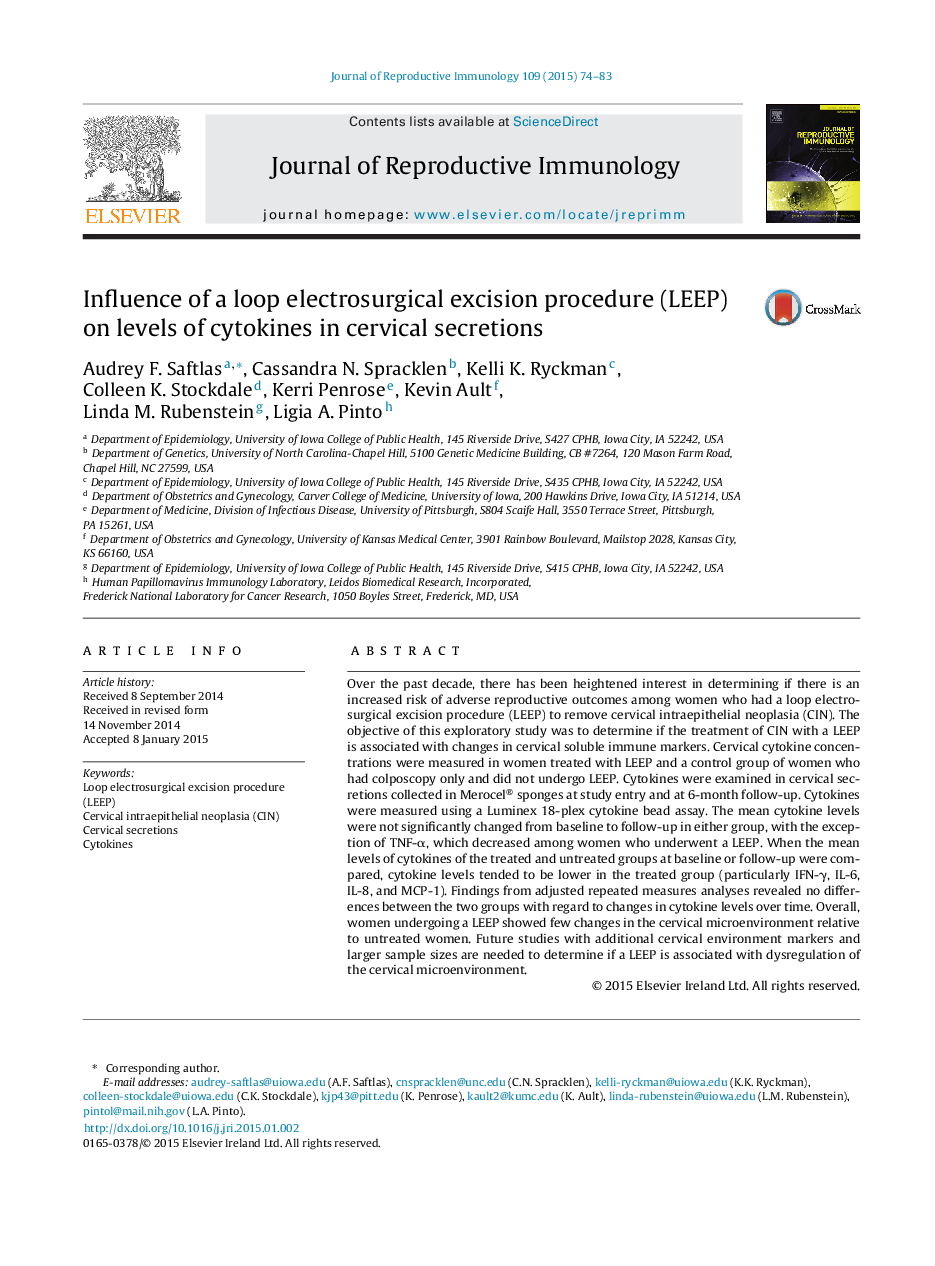| Article ID | Journal | Published Year | Pages | File Type |
|---|---|---|---|---|
| 6187780 | Journal of Reproductive Immunology | 2015 | 10 Pages |
â¢LEEP has been associated with adverse reproductive outcomes.â¢We study changes in cervical cytokine levels in LEEP-treated patients and controls.â¢Findings will increase understanding of possible mechanisms for adverse outcomes.â¢LEEP did not substantially alter cytokine levels over a six-month follow-up period.â¢Other mechanisms may account for the association between LEEP and adverse outcomes.
Over the past decade, there has been heightened interest in determining if there is an increased risk of adverse reproductive outcomes among women who had a loop electrosurgical excision procedure (LEEP) to remove cervical intraepithelial neoplasia (CIN). The objective of this exploratory study was to determine if the treatment of CIN with a LEEP is associated with changes in cervical soluble immune markers. Cervical cytokine concentrations were measured in women treated with LEEP and a control group of women who had colposcopy only and did not undergo LEEP. Cytokines were examined in cervical secretions collected in Merocel® sponges at study entry and at 6-month follow-up. Cytokines were measured using a Luminex 18-plex cytokine bead assay. The mean cytokine levels were not significantly changed from baseline to follow-up in either group, with the exception of TNF-α, which decreased among women who underwent a LEEP. When the mean levels of cytokines of the treated and untreated groups at baseline or follow-up were compared, cytokine levels tended to be lower in the treated group (particularly IFN-γ, IL-6, IL-8, and MCP-1). Findings from adjusted repeated measures analyses revealed no differences between the two groups with regard to changes in cytokine levels over time. Overall, women undergoing a LEEP showed few changes in the cervical microenvironment relative to untreated women. Future studies with additional cervical environment markers and larger sample sizes are needed to determine if a LEEP is associated with dysregulation of the cervical microenvironment.
